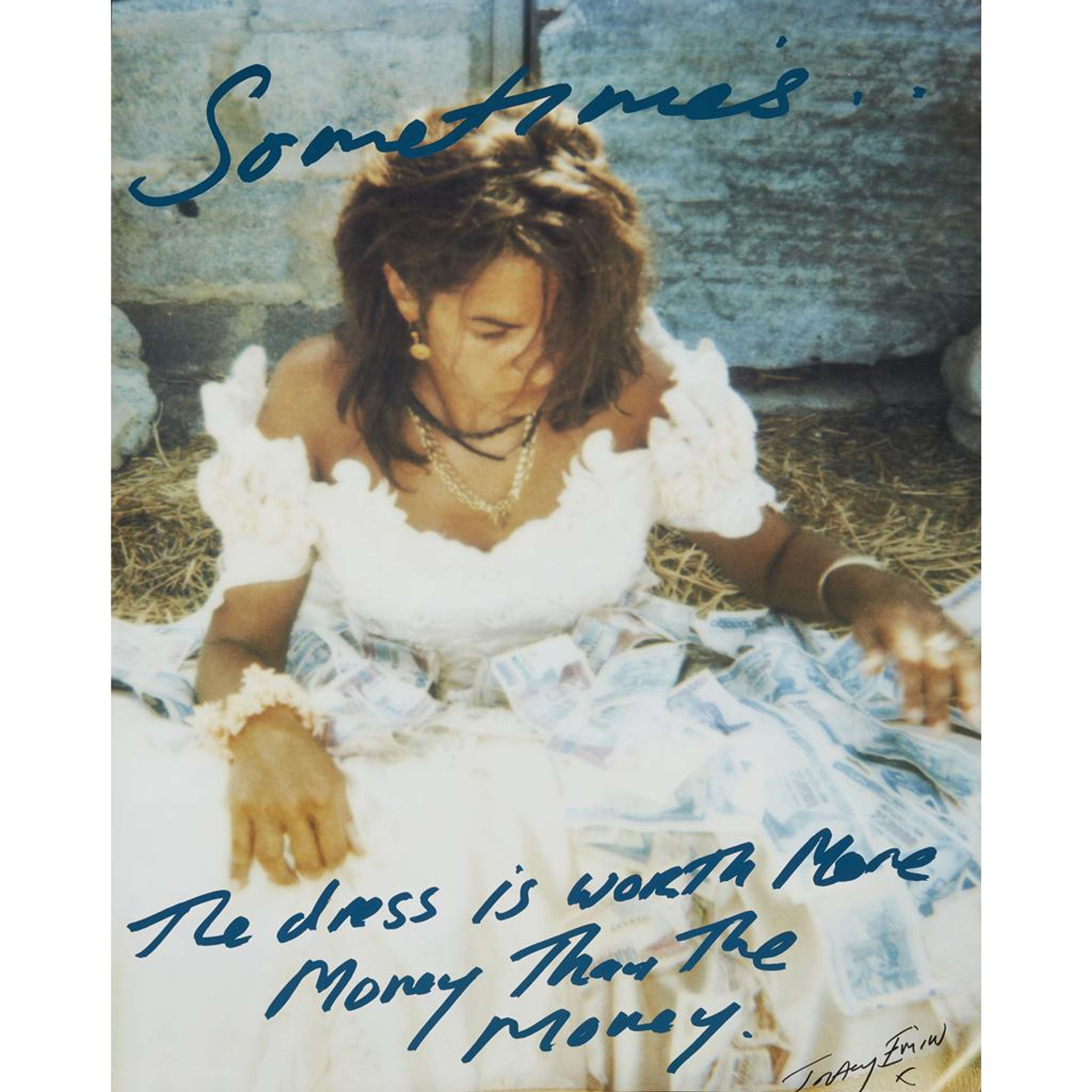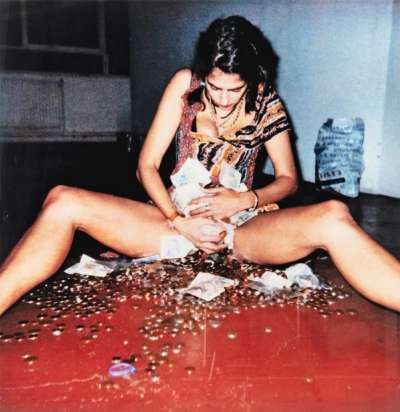
Sometimes The Dress Is Worth More Than The Money

Sometimes The Dress Is Worth More Than The Money
Signed Print
Tracey Emin
Price data unavailable
AAGR (5 years) This estimate blends recent public auction records with our own private sale data and network demand.
There aren't enough data points on this work for a comprehensive result. Please speak to a specialist by making an enquiry.
Medium: Lithograph
Edition size: 2000
Year: 2001
Size: H 60cm x W 60cm
Signed: Yes
Format: Signed Print
TradingFloor
Track this artwork in realtime
Watch artwork, manage valuations, track your portfolio and return against your collection
Track auction value trend
Auction Results
| Auction Date | Auction House | Location | Hammer Price | Return to Seller | Buyer Paid |
|---|---|---|---|---|---|
| October 2020 | Bonhams Knightsbridge | United Kingdom |
Meaning & Analysis
This signed lithograph from 2001 is a limited edition of 2000 from Tracey Emin’s Polaroids collection. The vertical lithograph constitutes an enlarged snapshot taken from one of Emin’s most well-known and eponymous video works. In the image, Emin is shown sitting down in a barn dressed in a white wedding gown, whilst on her lap she accumulates banknotes in a gesture evocative of her work I’ve Got it All.
In recent years, Tracey Emin’s video artworks have captured much critical attention, reviving both scholarly and public interest for the enfant terrible of British contemporary art. Sometimes The Dress Is Worth More Than The Money is perhaps Emin’s most well-known and acclaimed piece of video art. The work was initially made in 2001, and has since been exhibited in notorious contemporary art galleries like White Cube, that dedicated an entire night to screening 14 of Emin’s films, and was presented recently at Xavier Hufkens, as part of Tracey Emin, Video Works, 1995-2017, the most comprehensive retrospective exhibition on Emin’s video works and films.
In the video, Emin runs throughout a bare and barren deserted landscape dressed in a vaporous white wedding gown. As she runs, a Spaghetti-Western soundtrack plays in the background, situating the video in a dialogue with early Hollywood cinema. Emin seems to be running away from her wedding, rebelling against the institution of marriage, a notion that is reinforced by the ironic choice of the title. As art critic David Rimanelli remarked, Emin’s work confronts societal conventions and commits numerous infractions of what is considered feminine and polite, unapologetically asserting herself regardless of the expectations placed on her body.
Tracey Emin, born in 1963, stands as a fearless provocateur in the contemporary art scene. A trailblazer of the Young British Artists (YBA) movement in the late 1980s, the artist has sparked conversation and controversy for decades. Confronting themes of love, trauma and femininity with great vulnerability, Emin's work is a visceral tapestry of her life and has forged an intimate dialogue between artist and audience. In 1999, this raw approach to storytelling won her a nomination to the Turner Prize and, in 2007, it got her a coveted spot as a Royal Academician at the Royal Academy of Arts (RA).



